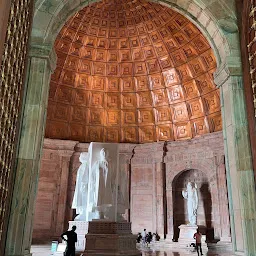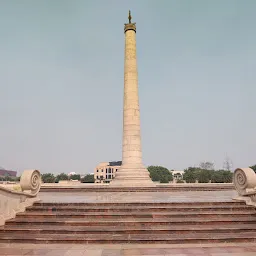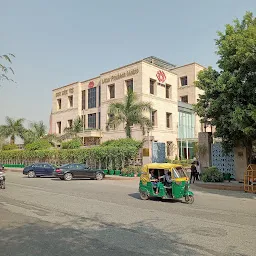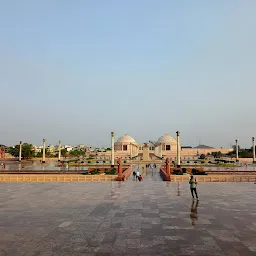Stupa Stambh
Vipin Khand 6, Gomathi Nagar, Lucknow, Uttar Pradesh 226010, IndiaStupa Stambh is a pagoda located in Lucknow, Uttar Pradesh. The average rating of this place is 4.30 out of 5 stars based on 11 reviews. The street address of this place is Vipin Khand 6, Gomathi Nagar, Lucknow, Uttar Pradesh 226010, India. It is about 1.76 kilometers away from the Badshahnagar railway station.
- Where is Stupa Stambh located?
- Stupa Stambh is located at Vipin Khand 6, Gomathi Nagar, Lucknow, Uttar Pradesh 226010, India.
- What is the nearest metro station from Stupa Stambh?
- Stupa Stambh is nearly 1.54 kilometers away from Lekhraj Market Metro Station. You can go to this metro station by using the Metro MRT Red Line.
- What is the nearest railway station from Stupa Stambh?
- Badshahnagar railway station is the nearest railway station to Stupa Stambh. It is nearly 1.76 kilometers away from it.
Deepsingh Sidhu 12 months ago
Nice place, visit in winters only.
Dr Ajay Kumar Maurya 24 months ago
A stupa (Sanskrit: स्तूप, lit. 'heap', IAST: stūpa) is a mound-like or hemispherical structure containing relics (such as śarīra – typically the remains of Buddhist monks or nuns) that is used as a place of meditation. A related architectural term is a chaitya , which is a prayer hall or temple containing a stupa.
In Buddhism, circumambulation or pradakhshina has been an important ritual and devotional practice since the earliest times, and stupas always have a pradakhshina path around them.
Stupas may have originated as pre-Buddhist tumuli in which śramaṇas were buried in a seated position called chaitya.
Some authors have suggested that stupas were derived from a wider cultural tradition from the Mediterranean to the Indus valley, and can be related to the conical mounds on circular bases from the 8th century BCE that can be found in Phrygia (tomb of Midas, 8th c. BCE), Lydia (such as the tomb of Alyattes, 6th c. BCE), or in Phoenicia (tombs of Amrit, 5th c. BCE).
Archaeologists in India have observed that a number of early Buddhist stupas or burials are found in the vicinity of much older, pre-historic burials, including megalithic sites. This includes site associated with the Indus Valley Civilization where broken Indus-era pottery was incorporated into later Buddhist burials. Structural features of the stupa- including its general shape and the practice of surrounding stupas with a stone or wooden railing- resemble both pre-Mauryan era cairn burials, as well as pre-historic relic burials found in southern India. Some stupas not believed to have been looted have been found to be empty when excavated, as have some pre-historic cairn sites, and animal bones are suspected to have occasionally been deposited at both types of sites.
Religious buildings in the form of the Buddhist stupa, a dome shaped monument, started to be used in India as commemorative monuments associated with storing sacred relics of the Buddha. After the parinirvana of the Buddha, his remains were cremated and the ashes divided and buried under eight mounds with two further mounds encasing the urn and the embers. The relics of the Buddha were spread between eight stupas, in Rajagriha, Vaishali, Kapilavastu, Allakappa, Ramagrama, Pava, Kushinagar, and Vethapida. The Piprahwa stupa also seems to have been one of the first to be built.[9] Lars Fogelin stated that the Vaisali relic stupa and Nigali Sagar stupa are likely the earliest archaeologically known stupas.
Guard rails —consisting of posts, crossbars, and a coping— became a feature of safety surrounding a stupa. The Buddha had left instructions about how to pay homage to the stupas: "And whoever lays wreaths or puts sweet perfumes and colours there with a devout heart, will reap benefits for a long time".[13] This practice would lead to the decoration of the stupas with stone sculptures of flower garlands in the Classical period.
Prakhar Sahu 84 months ago
Beautiful from inside and outside as well. The base of the above architecture is made of copper mixed metal. It gets hot in the summers, advised to visit in the morning.
- Address
- Vipin Khand 6, Gomathi Nagar, Lucknow, Uttar Pradesh 226010, India












